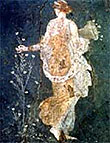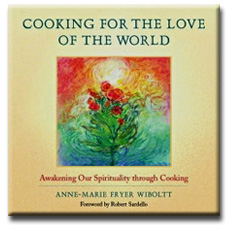Justice
David and Anne were building a garden with bits of branches and twigs and rocks near the sandbox. Jeffy came by and spit on Anne’s half. She jumped up and punched Jeffy in the face. That made David mad, and the two boys started calling her names. Anne shouted, “I won’t play with you any more,” and went away crying; her feelings were crushed.
The provider watched it all happen and just let it go. It was kiddie justice and interfering wouldn’t help; it would make it worse. Anne, an industrious child, would find something else to do. The provider also knew that David was a follower, and Jeffy was a bully. Jeffy would sooner or later make David mad too and end up in time out.
Was the provider right? Would you punish? Who would you punish, Jeffy for spitting, Anne for hitting, or all three for name-calling? Most adults would choose Anne because she hit and did more actual wrong than anyone else. After all, what’s spitting in the sand, and names are only names, right?
Reviewing this incident gives a wonderful insight into kiddie justice; this time the children were even. The sticks and stones near the sandbox were important to Anne. When her work was spit on, standing up and whacking Jeffy made perfect sense to her.
Kiddie justice isn’t adult justice. Kiddie justice is more like Old Testament justice–an eye for an eye. To a child, an eye for an eye is down to earth logic they can understand; it balances the scales.
And kiddie justice isn’t bad for kids; it’s just immature. Adults are often surprised that kiddie justice doesn’t ever include I’m sorry on its own. “I’m sorry,” is abstract; it only satisfies the governing adult. I’m sorry means I’m wrong. Kids are very matter of fact about who is wrong, but they don’t hold grudges, so it’s very possible for David and Anne to play again soon without an “I’m sorry.”
Trying to teach children under seven the New Testament-turn-the-other-cheek scheme comes later when children have a better sense of before and after and cause and result. Before seven, it works only in the minds of adults and takes a toll on the weaker, nicer child. It makes him the target of the bullies.
Knowing that kids seek power, just like adults, gives an advantage to adults trying to understand kiddie-group dynamics. Bullies antagonize other children’s productivity because they don’t know how to produce anything themselves. Hurting other children and their work makes them look like a big deal.
A good provider keeps the bully under control by limiting the bully’s play area and giving him or her a lot of assignment play. She might even allow the other children to pay back some aggressive behavior knowing that for the most part, the other non-aggressive children won’t hit hard enough to really hurt. The eye for an eye might even stop the bully behavior because a sting says a whole lot more than the meaningless “I’m sorry.”
But chaos can’t have a free reign in the day care. Providers must try to keep the physical assaults down, and there are times when that’s not easy. By taking into account the full picture of why a child hit, spat, or called names, means asking “What did you do?” and keeping to the concrete rather than the abstract “Why did you do that?” (which he/she won’t answer) Talking about behaviors in circle time helps a lot. Let kids speak freely.
Bottom line? Order, fair play, and individual attention are the cornerstones of good childcare. Good providers promote the concept that a child’s work and play is important and indeed worth protecting. At the same time, she makes every child accountable in his own way to the others for his or her actions.











